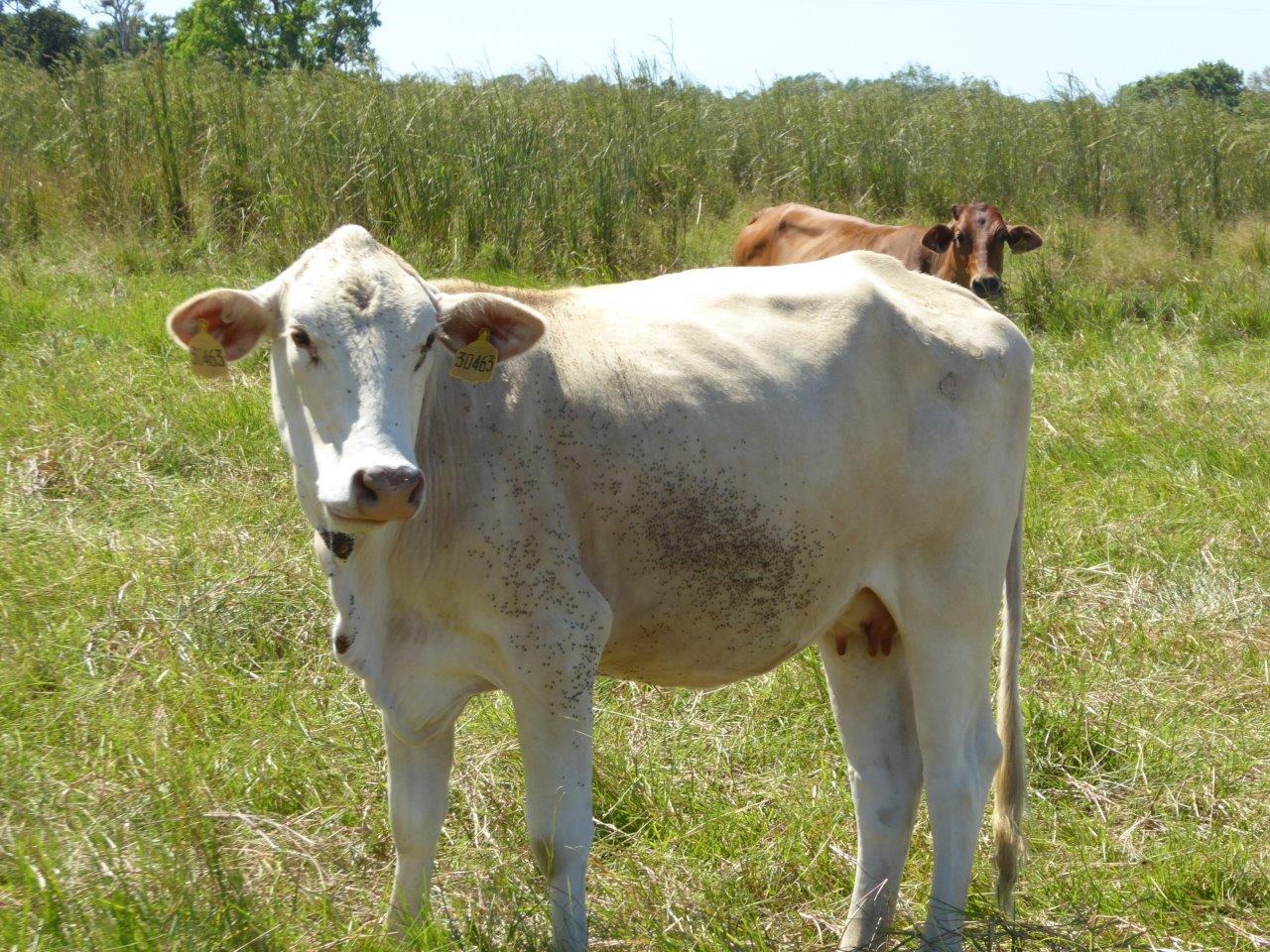Effective use of buffalo fly tags

The use of buffalo fly tags on cattle can be very profitable, but there is a risk that these benefits may be lost if tags are not used properly.
Buffalo flies were rated as the number one most costly endemic disease/condition for the Australian beef cattle industry in Meat and Livestock Australia’s “Priority list of endemic diseases for the red meat industry — 2022 update”. The authors estimated the economic cost of buffalo flies to the cattle industry to be around $170 million per year in lost production and control costs.
Management strategies
An integrated approach to buffalo fly control and treatment is recommended, for example, use of buffalo fly traps and dung beetles to reduce the buffalo fly population, selecting cattle with better genetic resistance to buffalo flies and only using chemical treatments when flies are likely to cause significant welfare or economic problems. For further information visit Recommendations for integrated buffalo fly control.
One of the treatment options is to use fly tags/plastic ear tags that are impregnated with chemicals that repel buffalo flies. Recent trials with fly tags in the NT found that using fly tags increased cattle weight gain by 0.09kg/day (9.8kg over 16 weeks) in the Douglas Daly region (Schatz et al, 2019), and 0.15kg/day (23kg over 22 weeks) in a floodplain environment (Schatz et al, 2023). The return on investment in the latter trial was >900% with the cattle price ($4.00/kg) and fly tag cost ($9.90/head) at the time.
How do buffalo flies develop chemical resistance?
While fly tags provide huge benefits in areas where buffalo flies are a problem, if they are not used well and resistance develops, they will lose their effectiveness. This has happened in parts of America, where cattle producers have found that fly tags no longer work.
To prevent this happening, all flies exposed to the chemical must encounter a high enough dose – exposure to low doses of the chemical allows the more chemical-tolerant flies to survive and pass on their resistant genes. This is why it is important to follow the manufacturer’s instructions.
Some common mistakes that will increase the likelihood and speed of resistance development are:
- Not using the recommended number of fly tags: If only one tag per animal is used when two are recommended, or the required number of animals aren’t tagged, the buffalo fly population is exposed to weaker than recommended doses of the chemicals, increasing the chance of resistance.
- Leaving tags in for longer than the recommended time: The effectiveness of chemicals in fly tags declines over time, so leaving them in longer than the recommended time (usually 16 weeks) means that buffalo flies are exposed to a weaker dose.
While these decisions may be perceived as a cost-saving in the short term, it could lead to the loss of a management tool for the region which is much more costly in the long term.
How to avoid chemical resistance
A tactic that can be used to prevent or delay the development of resistance is coordinating and rotating the active ingredient in fly tags each year.
If all the producers in a region use the same type of fly tags, and then all change to a different type the following year, the buffalo fly population has less time to develop resistance to a chemical.
This will become even more important in future, as Diazinon based fly tags (e.g. Patriot, Warrior, Optimiser etc.) will be banned from 10 September 2025, leaving fewer options for rotation. In the Top End of the NT, Shaun Healy (currently at Nutrien Ag Solutions, Darwin) has been providing recommendations to coordinate a buffalo fly tag rotation since 2000. In the near future the Department of Agriculture and Fisheries will publicise his recommendations on their Facebook channel @AgricultureNorthernTerritory site and the FutureBeef website.
Along with regional coordination of rotating active ingredients to manage resistance each property should aim to implement the following practices when using fly tags:
- Remove tags after the specified time – if tags are used on cattle over the wet season and cannot be replaced by the recommended time, it would be better to look at alternative management strategies, e.g. selecting cattle that are less susceptible to buffalo flies (just like humans, some animals react differently to insect bites than others)
- Ensure the required number of tags are used per animal and per mob
- Consider rotating any other chemicals used on-property that use the same active ingredients as fly tags, these could also influence fly resistance; and
- Use an integrated approach to management where possible and aim to decrease the fly susceptibility of your herd so that you are not reliant on chemicals in the long term.
For more information email Tim Schatz, Department of Agriculture and Fisheries Director Livestock Industries on tim.schatz@nt.gov.au.